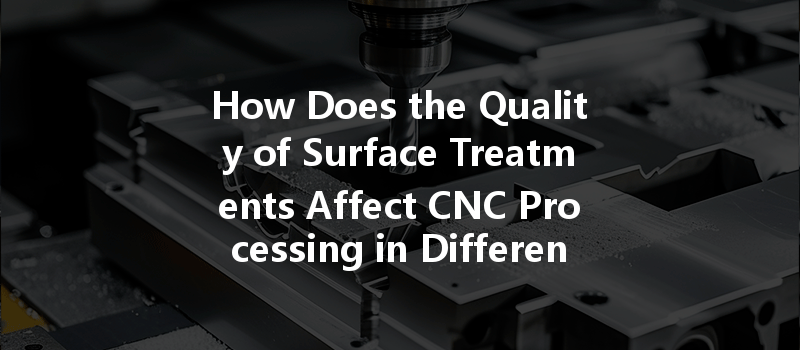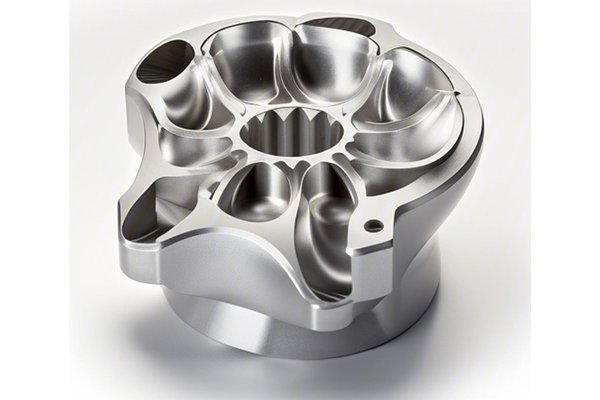Did you know that approximately 70% of machining defects in precision components are directly linked to inadequate surface treatments? The quality of surface treatments in CNC machining plays a pivotal role not only in enhancing the durability of components but also in preventing failures in critical applications across various industries. As the demand for precision and reliability skyrockets, understanding the implications of surface treatments in CNC processing becomes essential for manufacturers and engineers alike.
In this comprehensive blog, we will delve deep into the different types of surface treatments, their significance in CNC machining, and how they affect the overall quality of processed parts across different industries. We will provide detailed solutions and best practices to optimize surface treatment processes, ensuring that products not only meet industry standards but also outperform the competition.
Understanding Surface Treatments
Surface treatment involves modifying the surface of a material to improve its properties, which may include hardness, corrosion resistance, wear resistance, or aesthetic appeal. These treatments can be broadly categorized into three main types:
The Role of Surface Treatments in CNC Processing
CNC (Computer Numerical Control) machining is celebrated for its precision, and surface treatment is integral to achieving desired outcomes. Each treatment type can drastically alter the mechanical properties of the machined part, impacting performance, and longevity. Here, we outline the core benefits of high-quality surface treatments in CNC processing:
Components exposed to friction or abrasive environments can succumb to wear quickly. High-quality surface treatments improve wear resistance, effectively increasing the lifespan of parts in machinery such as pumps, turbines, and automotive components. For instance, coating steel parts with hard chrome can significantly reduce wear rates.
In industries like aerospace and marine, exposure to corrosive environments is a given. Strengthening the surface with treatments such as anodizing for aluminum or electroplating for steel parts helps prevent rust and deterioration, ensuring safety and reliability.
In consumer-oriented industries, product aesthetics can influence buying decisions. Treatments such as polishing or coatings not only enhance appearance but also improve functionality by creating a smoother surface, which can reduce friction and make cleaning easier.
High-quality surface treatments enhance the adhesion of coatings, paints, or seals, ensuring long-lasting performance. Industries such as automotive require primer and paint adhering to metal surfaces to maintain aesthetic value and durability against environmental challenges.
Industry-Specific Impact of Surface Treatments
Now, let’s delve deeper into how surface treatments affect various industries, highlighting specific examples and detailing solutions for optimization.
Impact: Components such as engine parts require exceptional fatigue resistance and corrosion protection.
Treatment Solutions:
Best Practices: Regularly audit the shot peening process parameters (such as intensity and coverage) to ensure optimal performance. The quality of the anodizing process must be closely monitored, including the uniformity of the coating thickness.

Impact: Components like brake calipers, rotors, and transmission gears endure significant stress and are often exposed to corrosive elements such as brake dust.
Treatment Solutions:
Best Practices: Implement a robust quality control system that includes inspections for coating thickness and adhesion tests.
Impact: In medical devices, biocompatibility and cleanliness are paramount.
Treatment Solutions:
Best Practices: Validate and document surface treatment procedures to ensure conformity with medical device regulations.
Impact: Electronic components demand excellent electrical conductivity and thermal management.
Treatment Solutions:
Best Practices: Consistently monitor the surface treatment processes to avoid material contamination, ensuring high conductivity and integrity of electronic components.
Optimizing Surface Treatment Processes
To reap the maximum benefits from surface treatments in CNC machining, one needs a well-structured approach. Here are actionable strategies for optimization:
In summary, the quality of surface treatments has a sweeping impact on CNC processing across various industries, influencing durability, performance, and reliability. Companies that prioritize high-quality surface treatments can ensure longer-lasting, better-performing products that meet stringent industry standards.
Investing in optimizing surface treatment processes is not merely about compliance; it’s about unlocking the true potential of CNC machining. With the increasing demands for precision and quality, understanding and implementing effective surface treatments should be a central focus for manufacturers and engineers alike.
As you reflect on the contents of this blog, consider the layers of complexity introduced by surface treatments and how they can elevate your CNC machining capabilities. This knowledge not only aids in making informed decisions but also fosters a competitive edge in an ever-evolving industry landscape. Whether you are a seasoned engineer, a quality control expert, or a manufacturing business owner, the insights gained here can lead to higher quality products, greater customer satisfaction, and ultimately, improved profitability.
Embrace these practices and continue to stay informed about advancements in surface treatment technologies; the future of CNC processing depends on it.






